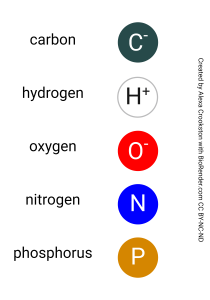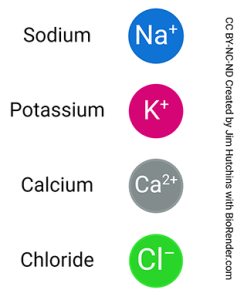The Neuronal Cell Membrane
Caleb Bevan
Objective 1: State the salient properties of the cell membrane which lead to its selective permeability.
What Makes up a Membrane?
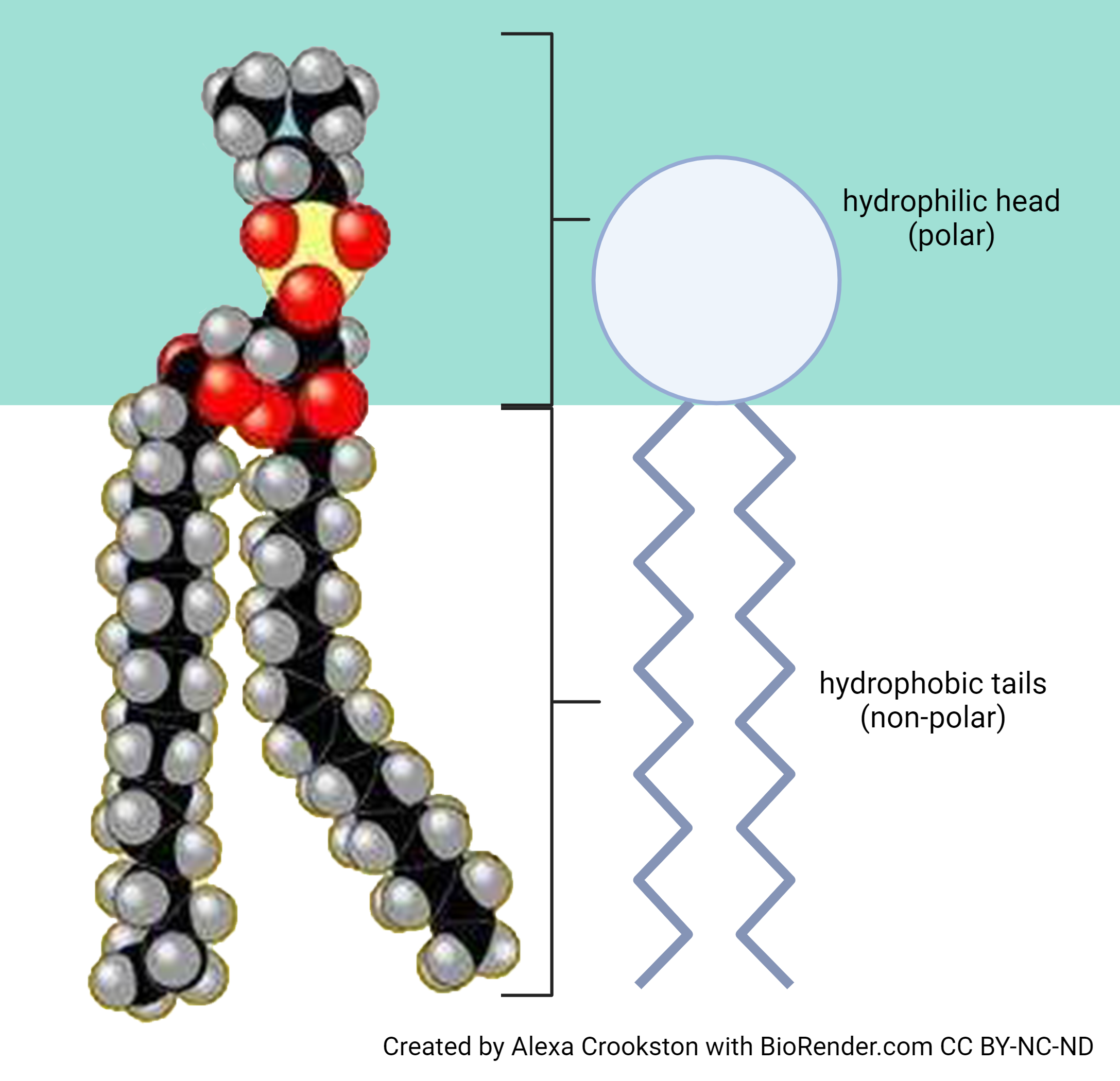 Membranes are made up of a complex mixture of molecules, but the simplest membranes (so-called black lipid membranes when created in the lab) are made up of a class of molecules called phospholipids.
Membranes are made up of a complex mixture of molecules, but the simplest membranes (so-called black lipid membranes when created in the lab) are made up of a class of molecules called phospholipids.
Phospholipids are amphipathic: at one end of the molecule, there is a polar head. This part of the molecule associates with the water and charged particles which make up the majority of the extracellular and intracellular fluid. We say it is hydrophilic (“water-loving”). At the other end of the molecule, there are two non-polar “tails” made up of a chain of lipid, which is a hydrocarbon (contains only carbon and hydrogen). These non-polar bonds actively repel water. We say they are hydrophobic (“water-hating”). These do not associate with water, rather they associate with each other.
The polar head is easily spotted in models like the one at left. It contains brightly-colored atoms (oxygen, nitrogen, and phosphorus), used by chemists to represent atoms with high electronegativity (the property of grabbing other atoms’ electrons). Conversely, black and white atoms have lower, almost equal electronegativity, which is why they form non-polar bonds that do not allow association with water.
In this book, we generally represent membranes as two parallel lines, or a series of dots with two tails on them, as in the “Permeability” section below.
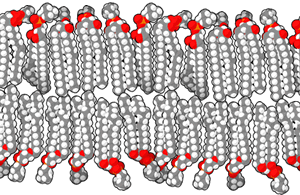 As mentioned earlier, phospholipids spontaneously assemble into phospholipid bilayers. Importantly for neuroscience, these phospholipid molecules can jostle past each other; they freely move in the plane of the neuronal cell membrane. If we don’t want them to move, or more importantly, don’t want the proteins floating in the bilayer to move, then we have to anchor them.
As mentioned earlier, phospholipids spontaneously assemble into phospholipid bilayers. Importantly for neuroscience, these phospholipid molecules can jostle past each other; they freely move in the plane of the neuronal cell membrane. If we don’t want them to move, or more importantly, don’t want the proteins floating in the bilayer to move, then we have to anchor them.
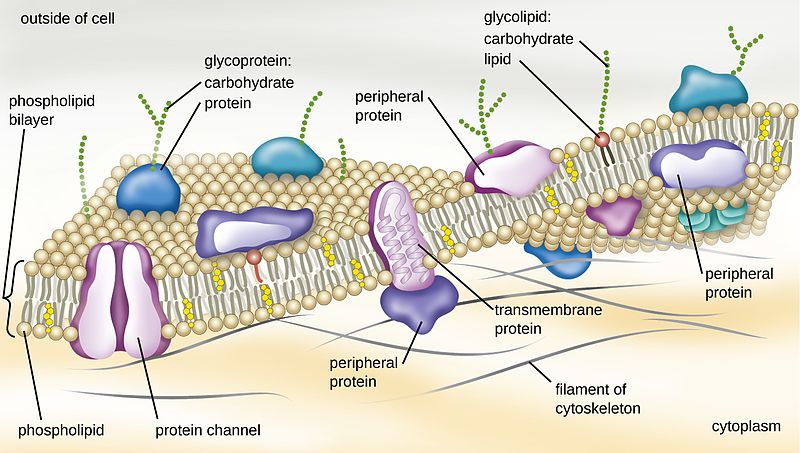 Proteins are embedded in the phospholipid bilayer. Any properties of the phospholipid bilayer not seen in black lipid membranes are due to these embedded or associated proteins.
Proteins are embedded in the phospholipid bilayer. Any properties of the phospholipid bilayer not seen in black lipid membranes are due to these embedded or associated proteins.
How Substances Cross the Neuronal Membrane (Permeability)
Gases can cross the membrane without assistance through simple diffusion. We’ll see a gas, nitric oxide (NO), that does this as it carries a neural signal.
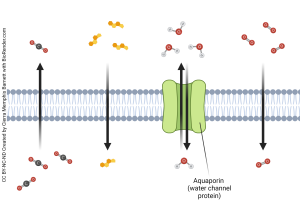
Small, lipid-soluble molecules like steroids (modified cholesterol) can cross the membrane without assistance through simple diffusion. In this unit, we’ll see how neurosteroids do that. In Unit 14, we’ll see how the steroid hormones cross the cell membrane and act on intracellular receptors.
Water gets across the cell membrane most of the time with assistance from a water channel protein called aquaporin. Aquaporin is a channel that stays open for water to diffuse into a membrane when needed. Water can also cross black lipid membranes without assistance, but that’s a miracle. No one has figured that one out yet.
Everything else needs some sort of carrier or channel to get across.
Ion Channels
In order to understand the working of nerve cells, we will focus on the movement of four ions:
- Sodium (Na+)
- Potassium (K+)
- Calcium (Ca2+)
- Chloride (Cl–)
 In general, ion channels are selective. That means they prefer to pass just one ion on the above list. Some ion channels will pass more than one but they always have a preference for one ion over another. When substances move through these channels, they move by simple diffusion. That is, substances always move from where they are at higher concentration to where they are at lower concentration. The exception, as we will see, is when charges get involved.
In general, ion channels are selective. That means they prefer to pass just one ion on the above list. Some ion channels will pass more than one but they always have a preference for one ion over another. When substances move through these channels, they move by simple diffusion. That is, substances always move from where they are at higher concentration to where they are at lower concentration. The exception, as we will see, is when charges get involved.
Mechanically-Gated Channels
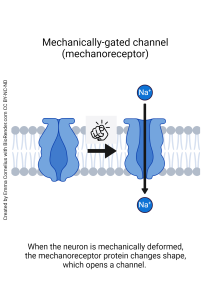
We will encounter the mechanically-gated ion channel as part of transduction in the somatosensory system, auditory system, vestibular system, and proprioceptive systems. The mechanically-gated channel responds to pressure on the cell membrane by opening and letting sodium ions pass.
Media Attributions
- Phospholipid head and tails © Alexa Crookston is licensed under a CC BY-NC-ND (Attribution NonCommercial NoDerivatives) license
- CPK system for molecular models © Alexa Crookston is licensed under a CC BY-NC-ND (Attribution NonCommercial NoDerivatives) license
- Color Code for Ions © Jim Hutchins is licensed under a CC BY-NC-ND (Attribution NonCommercial NoDerivatives) license
- Plasma Membrane © Nina Parker, Mark Schneegurt, Anh-Hue Thi Tu, Philipi Lister, and Brian M. Forster is licensed under a CC BY (Attribution) license
- Simple Diffusion © Cierra Memphis Barnett is licensed under a CC BY-NC-ND (Attribution NonCommercial NoDerivatives) license
- Simple diffusion in cell membrane © Mariana Luiz Villareal (LadyOfHats) is licensed under a Public Domain license
- Mechanically gated channel © Emma Cornelius is licensed under a CC BY-NC-ND (Attribution NonCommercial NoDerivatives) license

